阿波しじらの着物。Awa Shijira kimono.
いち瑠さんのきもの便利手帳で女物の着物と男物の着物の違いについて以下の様に解説しております。
※、身丈
着付け方に違いがあることから、着物の身丈(縦の長さ)は男性・女性で異なります。
女性が着付けをする際には「おはしょり」をつくって裾の位置を調整するため、「身長プラス5センチ」が身丈の長さの目安です。
「おはしょり」とは、たくし上げた着物を固定した際に帯の下から出てくる部分のこと。女性の着物におはしょりがあるのは、立ち姿を美しく見せる・着付け時のずれを調整しやすい・長めの身丈だと体型変化にも対応しやすい、といった理由があります。
一方、男性の着物は自分の身長に合わせた身丈で、おはしょりをつくらずとも着物が着られるよう仕立てます。
※、袖・身八つ口
着物の袖は、着物の性別による違いが最も表れている部分。女性用の着物には「身八つ口(みやつくち)」と「振り」いわれる切れ目があります。
「身八つ口」とは、女性の着物の身頃(胴の部分)の脇の切れ目のこと。女性の身頃に身八つ口があるのは、江戸時代に帯締めの位置が胸下に移動したためといわれています。
女性は帯位置の移動で腕などの上半身を動かしづらくなったため、動きやすいように身頃の脇に切れ目を入れたのが身八つ口です。
「振り」とは、女性の着物の袖付けから袖下までの空いた部分のこと。振りは、着物の袖や襦袢の色重ねを見せるおしゃれの要素を担っています。
男性の着物は脇や袖は閉じられており、身八つ口も振りもありません。振りを塞いだ袂は「人形」と呼ばれています。
今回創った阿波しじらの着物はおはしょりをつくらずに着る着物です。
但し袖には振りを、身頃の脇には身八っ口が開いています。
その方が涼しいと考えてその様な創りにしました。
それ以外にも”「振り」とは、女性の着物の袖付けから袖下までの空いた部分のこと。振りは、着物の袖や襦袢の色重ねを見せるおしゃれの要素を担っています。”と解説にある様にお洒落である事も考えました。
それと男物すなわち対丈(ついたけ)の着物はスマートな体型だと胸廻りにしわが出やすいので後幅と肩幅を同寸にして胸廻りの身幅を抑制しました。
身長が折り合えば女性でも着れる様にと着物の色を若草色にして袖の丸味も1寸(3.78cm)にしました。
体型的には身長173cm、バスト90cm、ヒップ94cm位の方のサイズです。
着物の寸法は着丈が肩から3尺9寸7分(150.1cm)裄1尺9寸5分(73.71cm)、後幅8寸(30.24cm)、前幅6寸5分(24.57cm)、衽幅4寸(15.12cm)です。
2万5千円で岩佐和裁で販売しています。
Ichiru's Kimono Handbook explains the difference between women's and men's kimonos as follows.
* Length
Due to differences in how the kimono is put on, the length (vertical length) of a kimono differs between men and women.
When a woman puts on a kimono, she adjusts the position of the hem by making an "ohashiori", so the guideline for the length is "height plus 5 cm".
"Ohashiori" is the part that comes out from under the obi when the kimono is fixed after being pulled up. Women's kimonos have ohashiori for the following reasons: it makes the standing figure look beautiful, it is easy to adjust the position when putting on the kimono, and a longer kimono length makes it easier to accommodate changes in body shape.
On the other hand, men's kimonos are tailored to fit their height so that they can be worn without making an ohashiori.
* Sleeves and Miyatsuguchi
The sleeves of a kimono are the part where the gender differences in kimonos are most apparent. Women's kimonos have a slit called a "miyatsuguchi" and a "furi".
"Miyatsuguchi" refers to the slits on the sides of the body (torso part) of a woman's kimono. It is said that women's bodies have miyatsuguchi because the position of the obi-jime (sash fastener) moved to below the chest during the Edo period.
As the obi position moved, it became difficult for women to move their arms and other upper body parts, so miyatsuguchi was made on the sides of the body to make it easier to move.
"Furi" refers to the open part of a woman's kimono from the sleeve attachment to the bottom of the sleeve. Furi is a fashionable element that shows off the layered colors of the kimono sleeves and undergarment.
Men's kimonos have closed sides and sleeves, and do not have miyatsuguchi or furi. Sleeves with closed furi are called "ningyo".
The Awa Shijira kimono that I made this time is a kimono that is worn without a hem.
However, there are furi on the sleeves and miyatsuguchi on the sides of the body.
I made it that way because I thought it would be cooler.
Other than that, as the explanation says, "Furi refers to the open area from the sleeve attachment to the bottom of a woman's kimono. Furi is a stylish element that shows off the layering of colors of the kimono sleeves and undergarment." I also considered it stylish.
Also, since men's kimonos, that is, tsuitake kimonos, are prone to wrinkles around the chest on slim builds, I made the back width the same as the shoulder width to reduce the width around the chest.
I made the kimono light green in color and made the sleeves 1 sun (3.78 cm) round so that women of the same height can wear it too.
In terms of body type, it is the size of someone who is about 173 cm tall, with a bust of 90 cm and hips of 94 cm.
The measurements of the kimono are length 150.1 cm from the shoulder, sleeve width 73.71 cm, back width 30.24 cm, front width 24.57 cm, and collar width 15.12 cm.
It is on sale at Iwasa Japanese Dress for 25,000 yen.
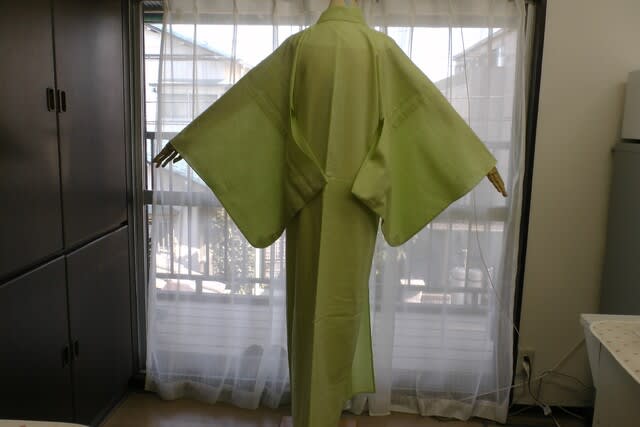
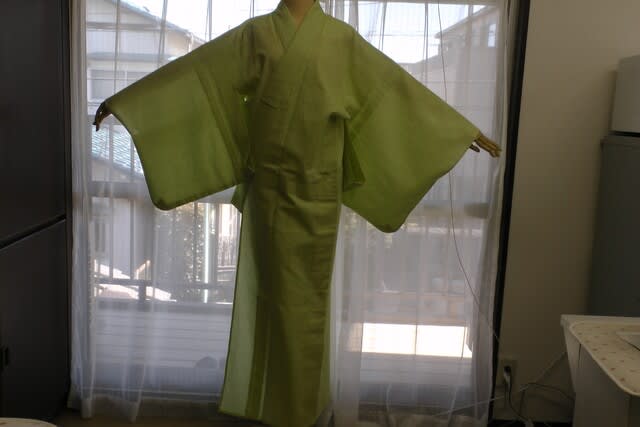
いち瑠さんのきもの便利手帳で女物の着物と男物の着物の違いについて以下の様に解説しております。
※、身丈
着付け方に違いがあることから、着物の身丈(縦の長さ)は男性・女性で異なります。
女性が着付けをする際には「おはしょり」をつくって裾の位置を調整するため、「身長プラス5センチ」が身丈の長さの目安です。
「おはしょり」とは、たくし上げた着物を固定した際に帯の下から出てくる部分のこと。女性の着物におはしょりがあるのは、立ち姿を美しく見せる・着付け時のずれを調整しやすい・長めの身丈だと体型変化にも対応しやすい、といった理由があります。
一方、男性の着物は自分の身長に合わせた身丈で、おはしょりをつくらずとも着物が着られるよう仕立てます。
※、袖・身八つ口
着物の袖は、着物の性別による違いが最も表れている部分。女性用の着物には「身八つ口(みやつくち)」と「振り」いわれる切れ目があります。
「身八つ口」とは、女性の着物の身頃(胴の部分)の脇の切れ目のこと。女性の身頃に身八つ口があるのは、江戸時代に帯締めの位置が胸下に移動したためといわれています。
女性は帯位置の移動で腕などの上半身を動かしづらくなったため、動きやすいように身頃の脇に切れ目を入れたのが身八つ口です。
「振り」とは、女性の着物の袖付けから袖下までの空いた部分のこと。振りは、着物の袖や襦袢の色重ねを見せるおしゃれの要素を担っています。
男性の着物は脇や袖は閉じられており、身八つ口も振りもありません。振りを塞いだ袂は「人形」と呼ばれています。
今回創った阿波しじらの着物はおはしょりをつくらずに着る着物です。
但し袖には振りを、身頃の脇には身八っ口が開いています。
その方が涼しいと考えてその様な創りにしました。
それ以外にも”「振り」とは、女性の着物の袖付けから袖下までの空いた部分のこと。振りは、着物の袖や襦袢の色重ねを見せるおしゃれの要素を担っています。”と解説にある様にお洒落である事も考えました。
それと男物すなわち対丈(ついたけ)の着物はスマートな体型だと胸廻りにしわが出やすいので後幅と肩幅を同寸にして胸廻りの身幅を抑制しました。
身長が折り合えば女性でも着れる様にと着物の色を若草色にして袖の丸味も1寸(3.78cm)にしました。
体型的には身長173cm、バスト90cm、ヒップ94cm位の方のサイズです。
着物の寸法は着丈が肩から3尺9寸7分(150.1cm)裄1尺9寸5分(73.71cm)、後幅8寸(30.24cm)、前幅6寸5分(24.57cm)、衽幅4寸(15.12cm)です。
2万5千円で岩佐和裁で販売しています。
Ichiru's Kimono Handbook explains the difference between women's and men's kimonos as follows.
* Length
Due to differences in how the kimono is put on, the length (vertical length) of a kimono differs between men and women.
When a woman puts on a kimono, she adjusts the position of the hem by making an "ohashiori", so the guideline for the length is "height plus 5 cm".
"Ohashiori" is the part that comes out from under the obi when the kimono is fixed after being pulled up. Women's kimonos have ohashiori for the following reasons: it makes the standing figure look beautiful, it is easy to adjust the position when putting on the kimono, and a longer kimono length makes it easier to accommodate changes in body shape.
On the other hand, men's kimonos are tailored to fit their height so that they can be worn without making an ohashiori.
* Sleeves and Miyatsuguchi
The sleeves of a kimono are the part where the gender differences in kimonos are most apparent. Women's kimonos have a slit called a "miyatsuguchi" and a "furi".
"Miyatsuguchi" refers to the slits on the sides of the body (torso part) of a woman's kimono. It is said that women's bodies have miyatsuguchi because the position of the obi-jime (sash fastener) moved to below the chest during the Edo period.
As the obi position moved, it became difficult for women to move their arms and other upper body parts, so miyatsuguchi was made on the sides of the body to make it easier to move.
"Furi" refers to the open part of a woman's kimono from the sleeve attachment to the bottom of the sleeve. Furi is a fashionable element that shows off the layered colors of the kimono sleeves and undergarment.
Men's kimonos have closed sides and sleeves, and do not have miyatsuguchi or furi. Sleeves with closed furi are called "ningyo".
The Awa Shijira kimono that I made this time is a kimono that is worn without a hem.
However, there are furi on the sleeves and miyatsuguchi on the sides of the body.
I made it that way because I thought it would be cooler.
Other than that, as the explanation says, "Furi refers to the open area from the sleeve attachment to the bottom of a woman's kimono. Furi is a stylish element that shows off the layering of colors of the kimono sleeves and undergarment." I also considered it stylish.
Also, since men's kimonos, that is, tsuitake kimonos, are prone to wrinkles around the chest on slim builds, I made the back width the same as the shoulder width to reduce the width around the chest.
I made the kimono light green in color and made the sleeves 1 sun (3.78 cm) round so that women of the same height can wear it too.
In terms of body type, it is the size of someone who is about 173 cm tall, with a bust of 90 cm and hips of 94 cm.
The measurements of the kimono are length 150.1 cm from the shoulder, sleeve width 73.71 cm, back width 30.24 cm, front width 24.57 cm, and collar width 15.12 cm.
It is on sale at Iwasa Japanese Dress for 25,000 yen.












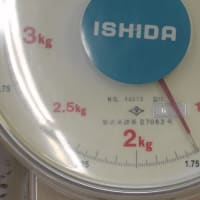


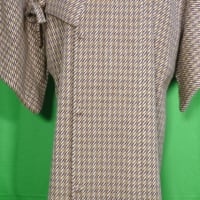


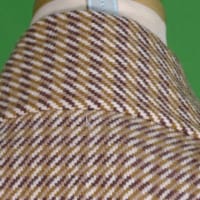









※コメント投稿者のブログIDはブログ作成者のみに通知されます